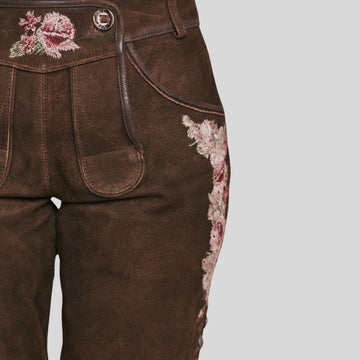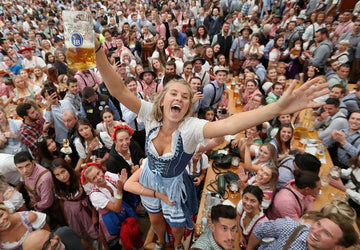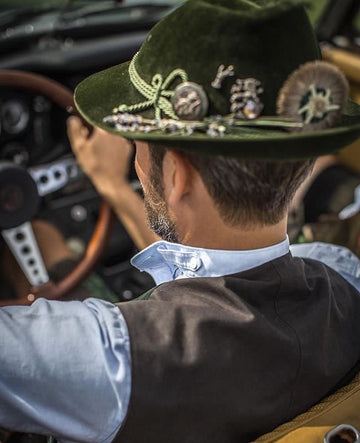Oktoberfest, the world’s most famous beer festival, is an annual celebration held in Munich, Germany. Known for its lively atmosphere, traditional Bavarian music, and vast quantities of beer, Oktoberfest is also a showcase of Bavarian culture and fashion. The event attracts millions of visitors each year, eager to experience the festivities and immerse themselves in a tradition that dates back over two centuries. If you’re planning to attend, understanding the timing of the festival and how to dress appropriately is key to enjoying the full Oktoberfest experience.
The History and Significance of Oktoberfest
Oktoberfest has a rich history that dates back to October 12, 1810, when the citizens of Munich were invited to join in the wedding festivities of Crown Prince Ludwig (later King Ludwig I) and Princess Therese of Saxe-Hildburghausen. The event was such a success that it became an annual tradition, evolving into the massive celebration we know today.
The original Oktoberfest was held in October, but over the years, the start date was moved to September to take advantage of the warmer weather. The festival now typically begins in late September and runs for about 16 to 18 days, ending on the first Sunday in October. However, if the first Sunday falls before October 3rd, the festival is extended to include German Unity Day, making the celebrations even longer.
In 2024, Oktoberfest will start on September 21st and conclude on October 6th. This timeline allows visitors to enjoy the festivities during the mild autumn weather, ensuring a more comfortable experience while indulging in outdoor activities.
Oktoberfest Womens Outfit: Tradition Meets Modernity

When attending Oktoberfest, one of the most exciting aspects is choosing the perfect Oktoberfest Womens Outfit. The traditional choice is the Dirndl, a type of German Oktoberfest dress that has become synonymous with the festival. The Dirndl consists of several components: a bodice, blouse, full skirt, and apron. Each element of the outfit has a unique historical and cultural significance.
The History of the Dirndl
The Dirndl originated in the 19th century as a practical garment for Alpine peasants and servants. Made from durable materials, it was designed to withstand the rigors of daily work. Over time, the Dirndl became popular among women of all social classes, evolving into a fashionable outfit worn on special occasions and during festivals.
Today, the Dirndl is a beloved symbol of Bavarian culture and heritage. It’s worn with pride by women of all ages, not only in Germany but around the world, especially during Oktoberfest. The resurgence of interest in traditional attire has led to a renaissance of the Dirndl, with modern designers creating innovative versions that appeal to contemporary tastes.
Choosing the Perfect Dirndl
When selecting a Dirndl for Oktoberfest, consider the style, length, and color that best suits you. Dirndls come in a variety of lengths, from the traditional ankle-length to more modern knee-length and even mini versions. While shorter Dirndls are popular among younger women, the classic, longer styles are still widely favored for their elegance and authenticity.
Color and pattern options are virtually limitless. Traditional Dirndls often feature deep, rich colors like forest green, burgundy, and navy blue, with intricate floral or geometric patterns. Modern interpretations of the Dirndl may include pastel shades, bold prints, or even metallic accents, offering a wide range of choices to suit every personality.
Accessories are key to completing the Oktoberfest womens outfit. A well-chosen necklace, earrings, and a shawl can elevate the entire look. Don’t forget about footwear—comfortable yet stylish shoes are essential, as you’ll be on your feet for much of the day. Traditional shoes like Haferlschuh or ballet flats work well, but many women opt for more contemporary options like ankle boots or even sneakers for a modern twist.
The Apron Bow: A Unique Communication Tool
One of the most interesting aspects of the Dirndl is the apron bow, which traditionally serves as a subtle communication tool. The position of the bow can indicate a woman’s relationship status:
- Left Side: Single and ready to mingle.
- Right Side: Married or taken.
- Center: Virgin or young maiden.
- Back: Widowed or, in some cases, a server at the festival.
While not everyone follows these traditions strictly today, it’s a fun and unique part of the Oktoberfest experience.
German Oktoberfest Dress: A Cultural Treasure
The Dirndl is more than just a dress; it’s a piece of living history, deeply connected to Bavarian identity. Wearing a German Oktoberfest Dress is a way to honor this heritage and participate in the cultural exchange that Oktoberfest represents.
The Dirndl in Bavarian Culture
In Bavarian culture, the Dirndl is a symbol of femininity, tradition, and regional pride. It’s often passed down through generations, with each Dirndl carrying its own stories and memories. For many Bavarians, wearing a Dirndl is an expression of respect for their ancestors and a way to keep their cultural traditions alive.
At Oktoberfest, the Dirndl is worn with great pride. Many women choose to invest in a high-quality, custom-made Dirndl that reflects their personal style while adhering to traditional craftsmanship. These dresses are often made from premium materials like silk, velvet, and wool, with hand-stitched embroidery and intricate detailing.
The Modern Dirndl: Fusion of Old and New
While the traditional Dirndl remains popular, many women opt for a more modern take on the German Oktoberfest dress. Contemporary Dirndls may feature shorter hemlines, bolder colors, and non-traditional fabrics like denim or leather. Some designs even incorporate modern fashion trends, such as off-the-shoulder blouses or corset-style bodices.
The beauty of the Dirndl lies in its versatility. Whether you choose a traditional or modern style, the Dirndl allows for personal expression while staying true to its cultural roots. It’s a timeless garment that continues to evolve with each new generation of Oktoberfest-goers.
Oktoberfest Outfit Men: Classic Style with a Modern Twist
For men, the traditional Oktoberfest Outfit Men wear is Lederhosen, a pair of knee-length leather trousers that have become iconic in Bavarian culture. Lederhosen are durable, practical, and comfortable, making them the perfect choice for a day of celebrating at Oktoberfest.
The History of Lederhosen
Lederhosen have been worn in the Alpine regions of Germany, Austria, and Switzerland for centuries. Originally, they were the workwear of choice for farmers, hunters, and laborers due to their durability and ease of movement. Made from tanned leather, typically deerskin, Lederhosen were tough enough to withstand the demands of physical labor while offering protection from the elements.
Over time, Lederhosen became associated with Bavarian identity and were adopted as a traditional garment for festivals and special occasions. Today, they are worn with pride at Oktoberfest and other cultural events, symbolizing a connection to the past and a celebration of regional heritage.
Styling the Oktoberfest Outfit Men Wear
A traditional Oktoberfest outfit men wear typically includes Lederhosen paired with a checkered or white shirt, a vest, and sturdy shoes like Haferlschuhe. The Lederhosen may feature intricate embroidery, showcasing patterns that have been passed down through generations. The choice of color—often shades of brown, gray, or black—adds to the rugged yet stylish look.
Accessories play an important role in completing the Oktoberfest outfit men wear. A traditional Bavarian hat, known as a Tirolerhüte, often adorned with a feather or brush, adds a touch of flair. Woolen socks, a stylish belt, and a leather or wool vest can also enhance the overall look.
Modern Takes on Lederhosen
Just as with the Dirndl, modern interpretations of Lederhosen have emerged in recent years. Some men opt for shorter, more tailored versions of the trousers, or even Lederhosen made from alternative materials like suede or canvas. Contemporary designs may incorporate bold colors or minimalist embroidery, catering to those who prefer a more understated look.
For those who want to blend tradition with modern fashion, pairing Lederhosen with a trendy shirt, slim-fit vest, or stylish jacket can create a unique Oktoberfest outfit men appreciate for its balance of old and new.
Oktoberfest Around the World: A Global Celebration
While Munich’s Oktoberfest is the most famous, the festival’s popularity has led to celebrations being held around the world. From large cities like New York and Tokyo to smaller communities in Australia and Brazil, Oktoberfest has become a global phenomenon. These international celebrations often feature traditional Bavarian music, food, and, of course, beer, allowing people from all cultures to participate in the festivities.
Despite the global reach, the fashion traditions of Oktoberfest remain strong. Whether you’re attending the festival in Munich or at a local event, donning an Oktoberfest womens outfit or a German Oktoberfest dress helps to create an authentic experience. The same goes for men—wearing a traditional Oktoberfest outfit men have worn for centuries is a way to connect with the festival’s roots, no matter where you are.
Conclusion: Preparing for Oktoberfest 2024
Oktoberfest in Germany is more than just a beer festival—it’s a celebration of Bavarian culture, history, and fashion. As you prepare for Oktoberfest 2024, which runs from September 21st to October 6th, take the time to plan your outfit carefully. Whether you’re donning an Oktoberfest womens outfit, a German Oktoberfest dress




